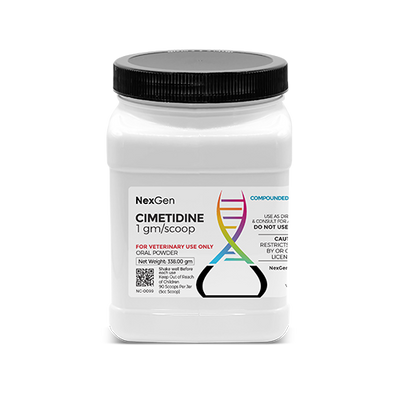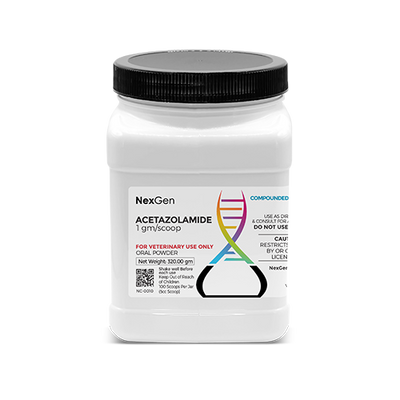
Phenylbutazone 1 gm/scoop + Cimetidine 500 mg/scoop, Oral Powder, 60 Scoops (5cc Scoop)
Login for pricing
- Brand
- Mixlab
- SKU:
- NC-0291
- Product Type:
- Powder
- Size:
- 16oz
- Scoops Per Container:
- 60
- Scoop Size:
- 5cc
Pain management in the horse is an important aspect of horse husbandry, and plays an important role in recovery from injury or illness. The benefits of adequate pain management can also reduce the development of chronic pain syndromes. One of the most common origins of pain is inflammation, which is part of the body’s normal response to injury and disease; it is also is an important part of tissue healing mechanisms. Indicators of inflammation are pain, heat, swelling and redness.1 When pain associated with inflammation becomes debilitating for a horse, significant negative outcomes can arise.
Acute pain is of short duration and is generally due to a sudden illness or injury. It can also include the pain associated with surgical procedures. The treatment goal is to keep the horse comfortable while it recovers and minimize the risk of additional health problems caused by acute pain.
Chronic pain persists for extended periods of time and may not be directly associated with a single contributing event. Examples include osteoarthritis, chronic laminitis and navicular disease. Performance horses often experience chronic pain due to high levels of training and completion.2
Recognition of overt pain behaviors, such as rolling, kicking at the abdomen, flank watching or lameness may be obvious, however, more subtle signs of pain can include changes in facial expression or head position, location in the stall and response to palpation.3
The signs of pain in the horse can be subtle, but some signs to look out for include:
- Behavioral changes such as restlessness, agitation, head shaking, depression, aggression or decreased interaction with surroundings
- Changes in posture or movement, lowered head carriage, stretching, weight shifting or pawing
- Changes in appetite
- Changes in facial expression1
In cases where causes of pain are more specific and can relate to underlying problems, signs include:
- Colic: Rolling, flank watching, kicking at the abdomen, pawing, stretching, groaning
- Lameness: Weight-shifting between limbs, abnormal weight distribution, pointing, hanging and rotating of the limbs, abnormal movement, and reluctance to move or work
- Eye pain: holding the eye closed, upper eyelashes pointing downwards, increased tear production or discharge from the eye
- Dental: dropping food, slow chewing, reluctance to eat, head tilting or avoiding the bit.1
The methods used to manage a horse in pain will depend on the duration, type and severity of the pain.3,4 Diagnosis and treatment of the underlying problem is the first step and a short course of pain relief is often required while this is undertaken. In cases of chronic pain, longer term or indefinite treatment may be needed to manage the horse’s comfort and improve its quality of life. The most common example of this is horses with osteoarthritis.
NOTE: Cimetidine is a CLASS 5 DRUG under the Association of Racing Commissioners International (ARCI) Uniform Classification Guidelines for Foreign Substances (UCGFS).
Where to buy Phenylbutazone + Cimetidine
Phenylbutazone + Cimetidine is available in the U.S. through several pharmaceutical manufacturers and through veterinary custom compounding companies.
This product carries numerous potential drug interactions. Please consult your veterinarian prior to beginning any treatment regimen.
FOR RX ONLY: A valid prescription from a licensed veterinarian is required for dispensing this medication.
1Sanchez L.C., Robertson S.A. Pain control in horses: what do we really know? Equine Vet J. 2014 Jul;46(4):517-23. doi: 10.1111/evj.12265. Epub 2014 May 15. PMID: 24645799.


















